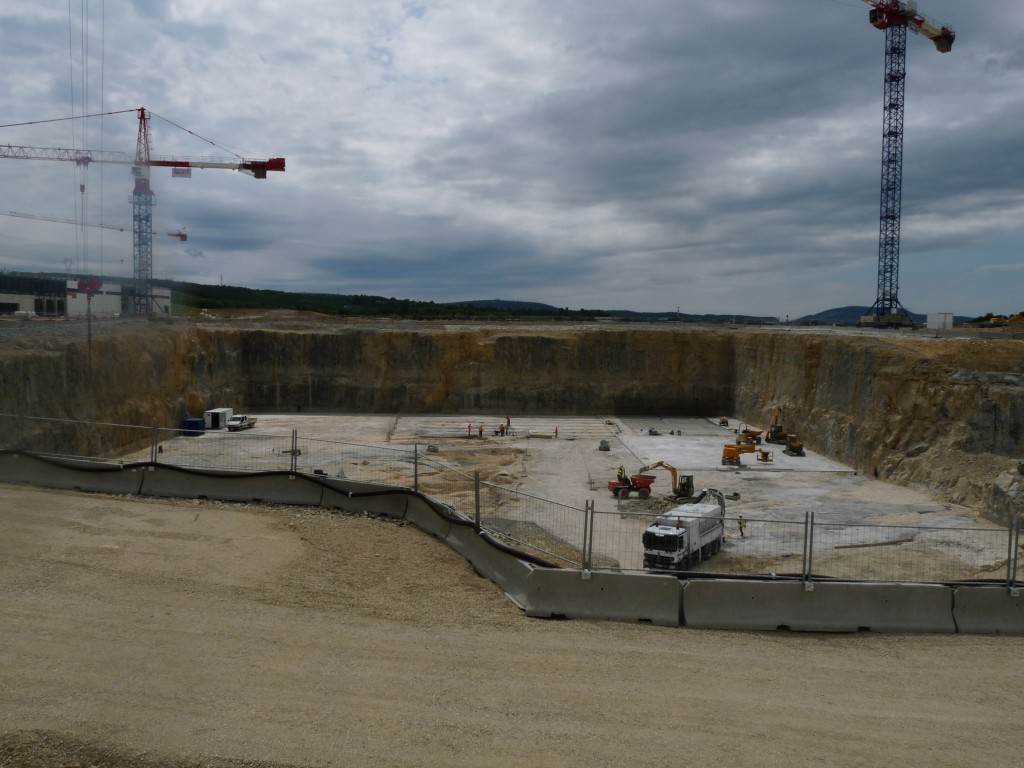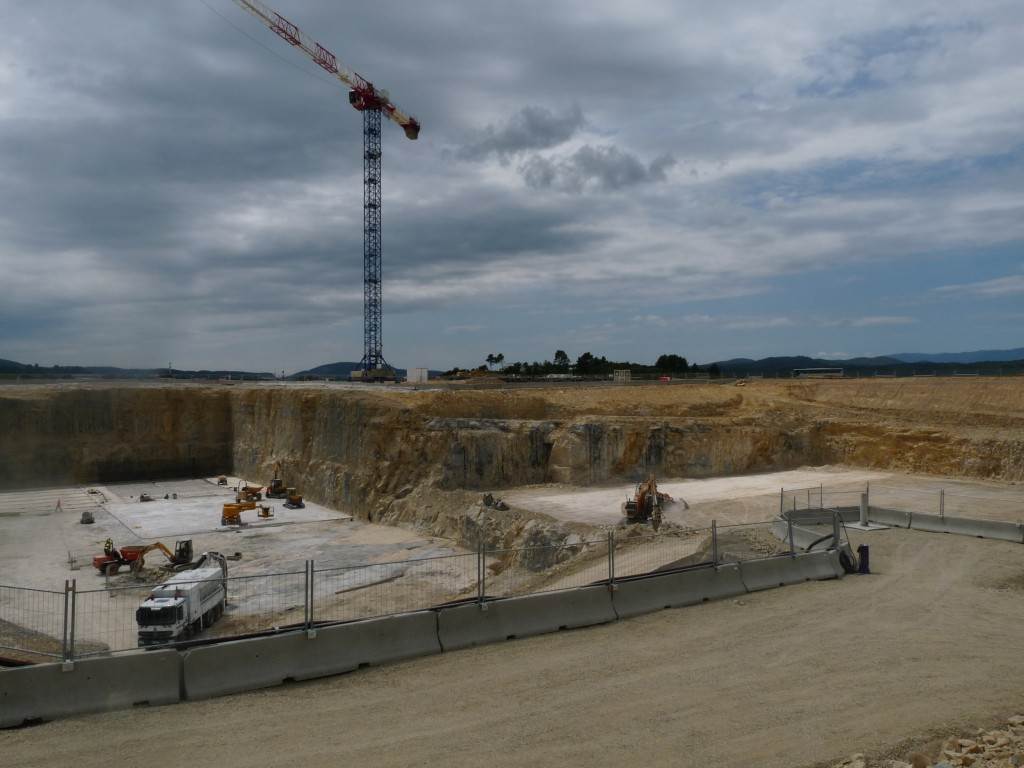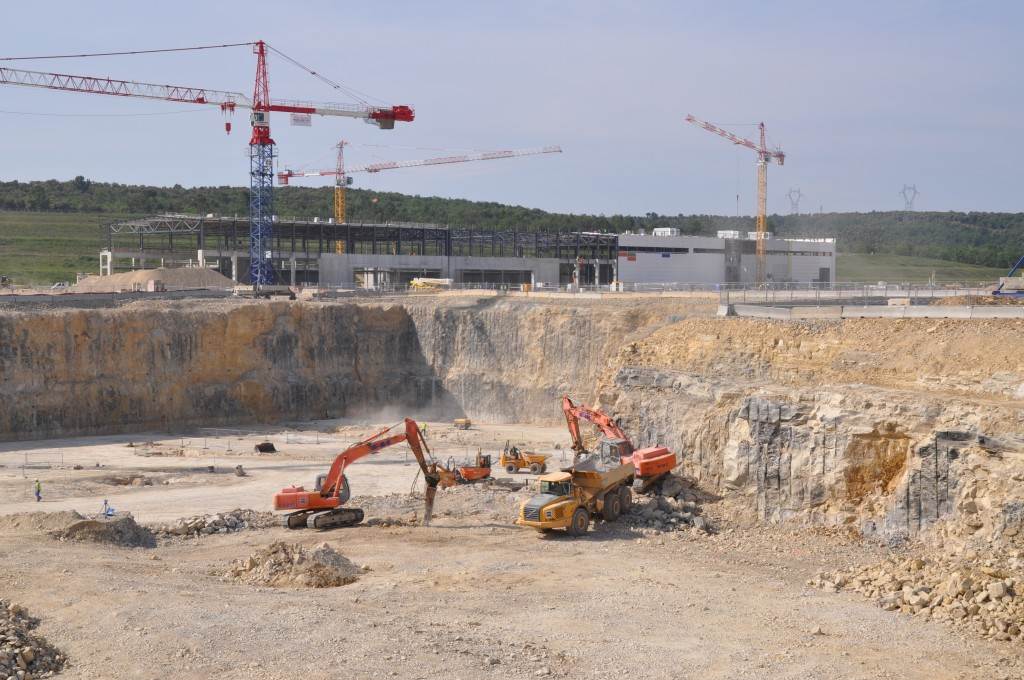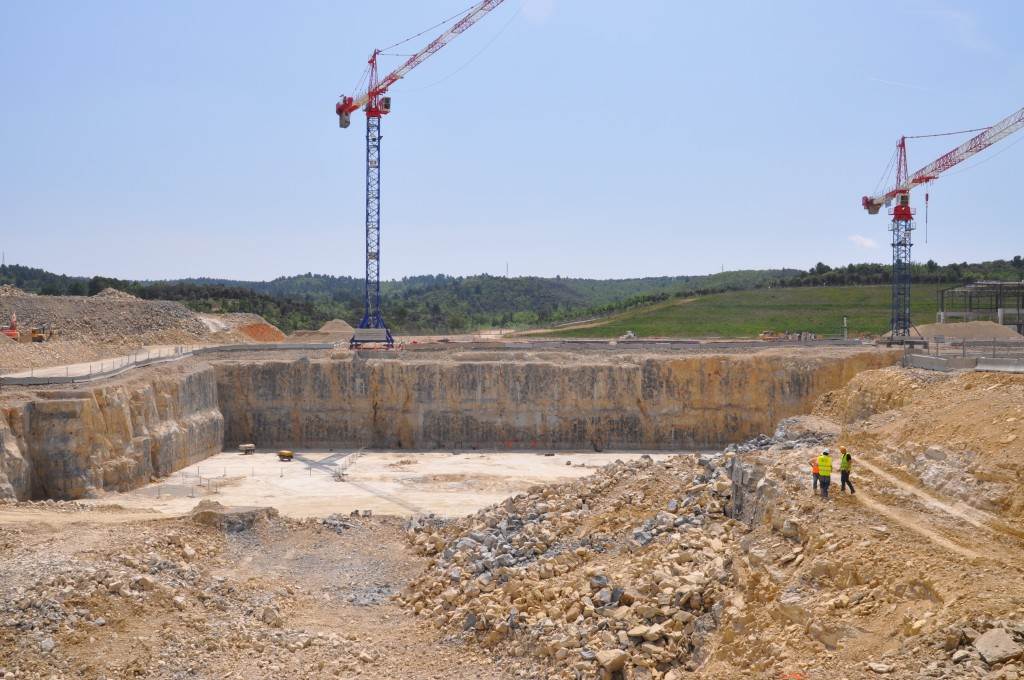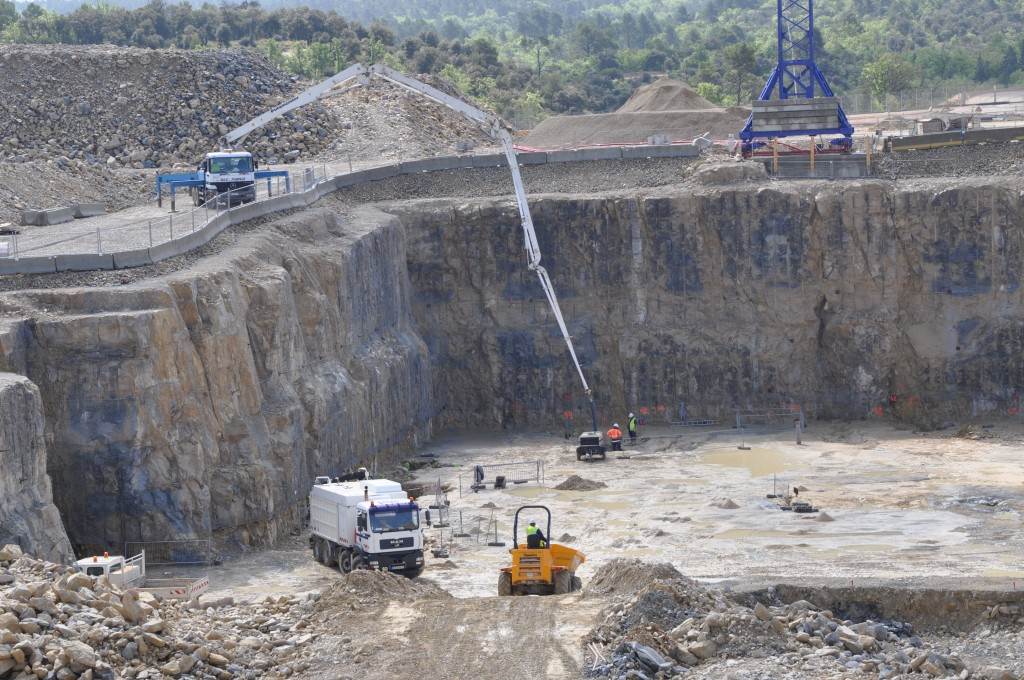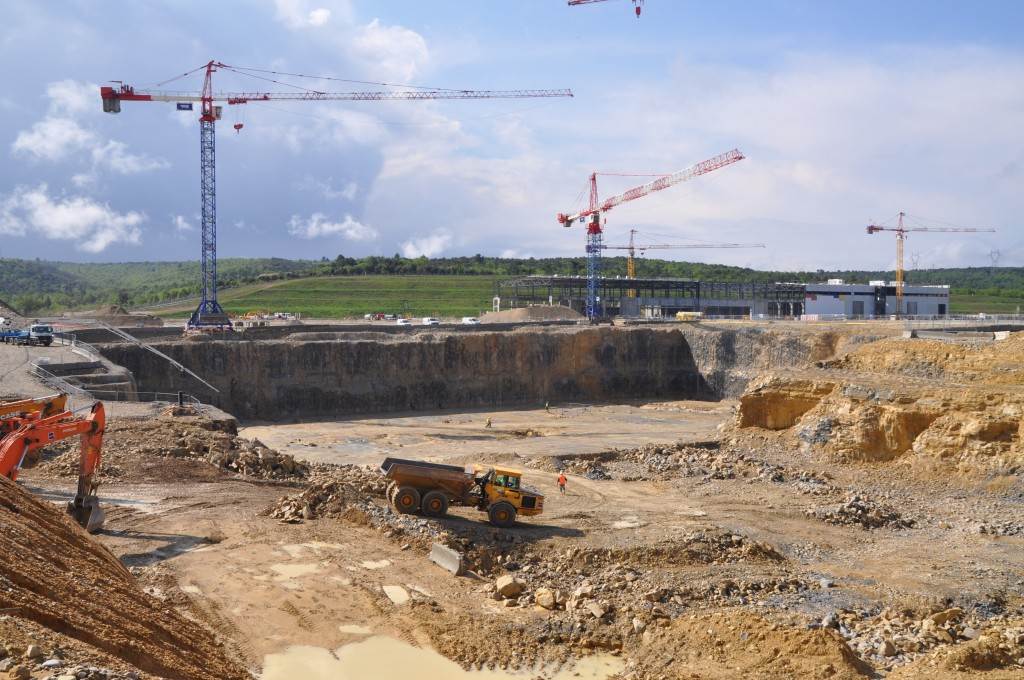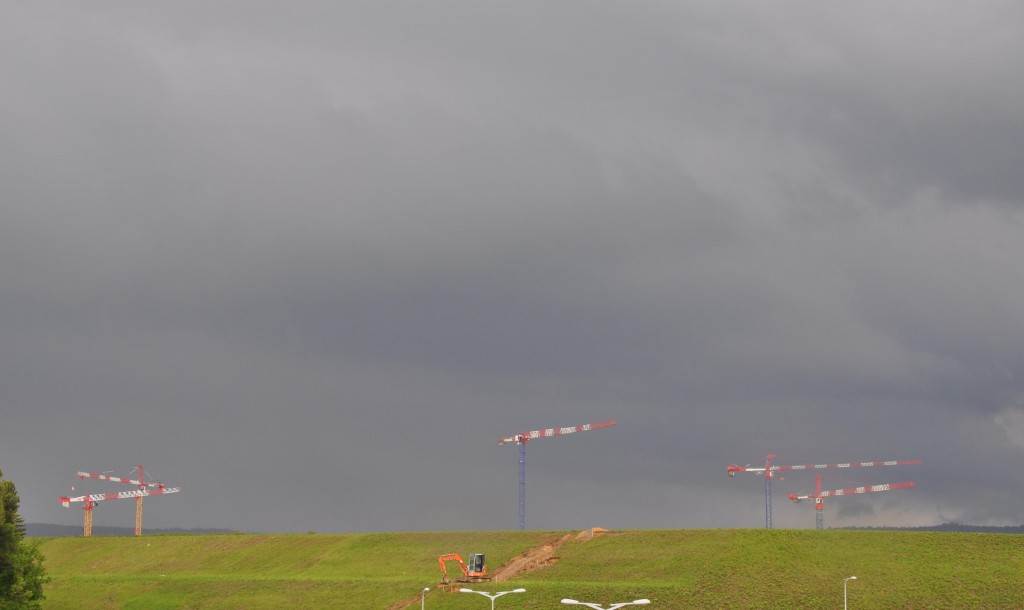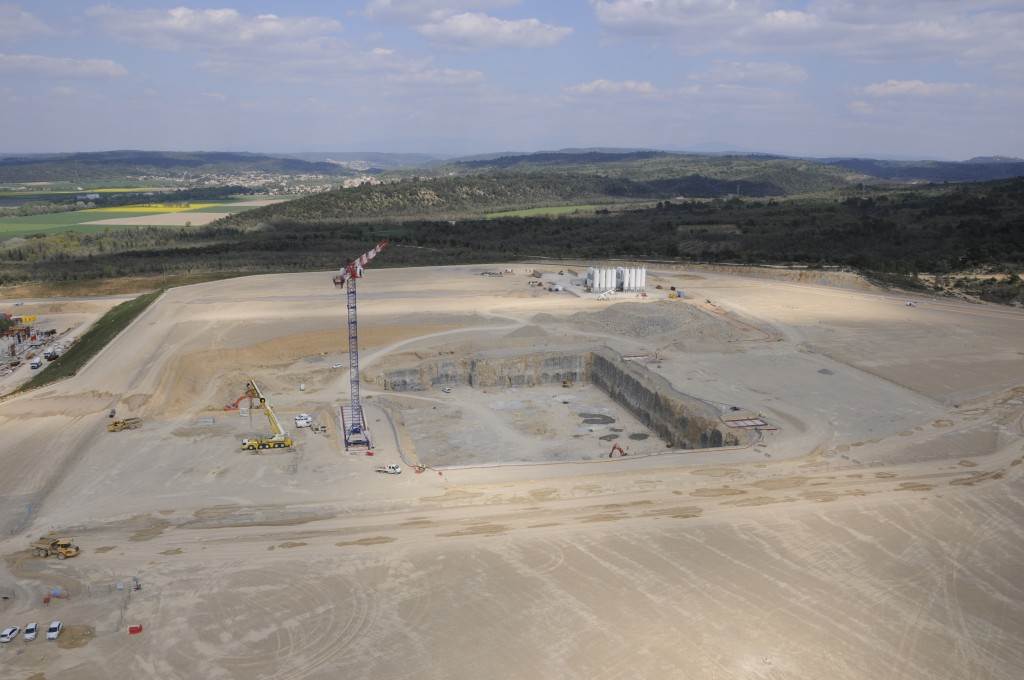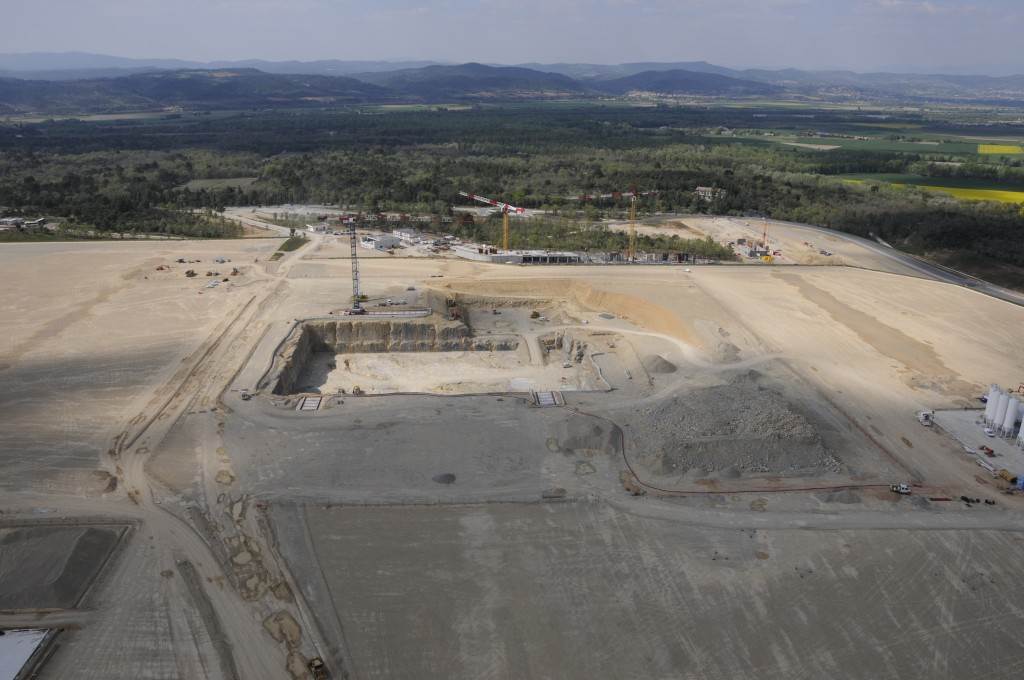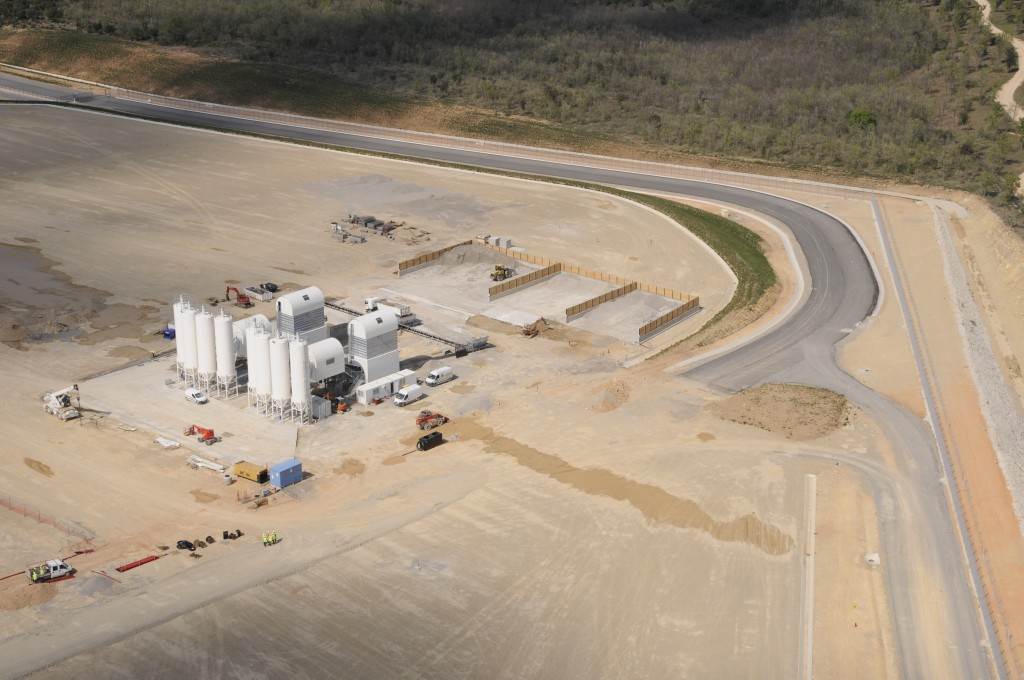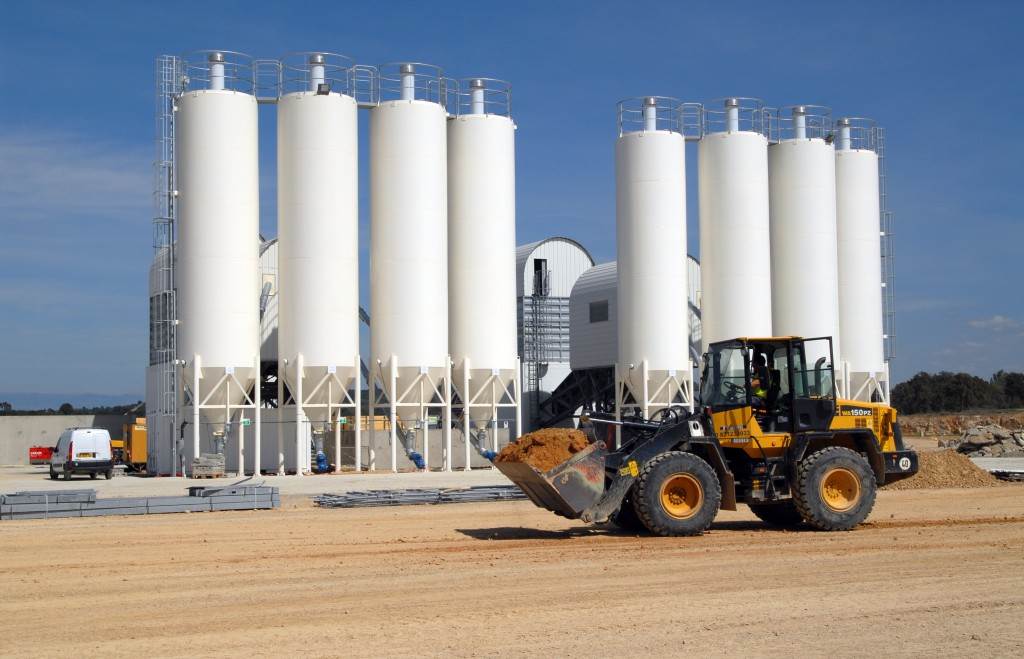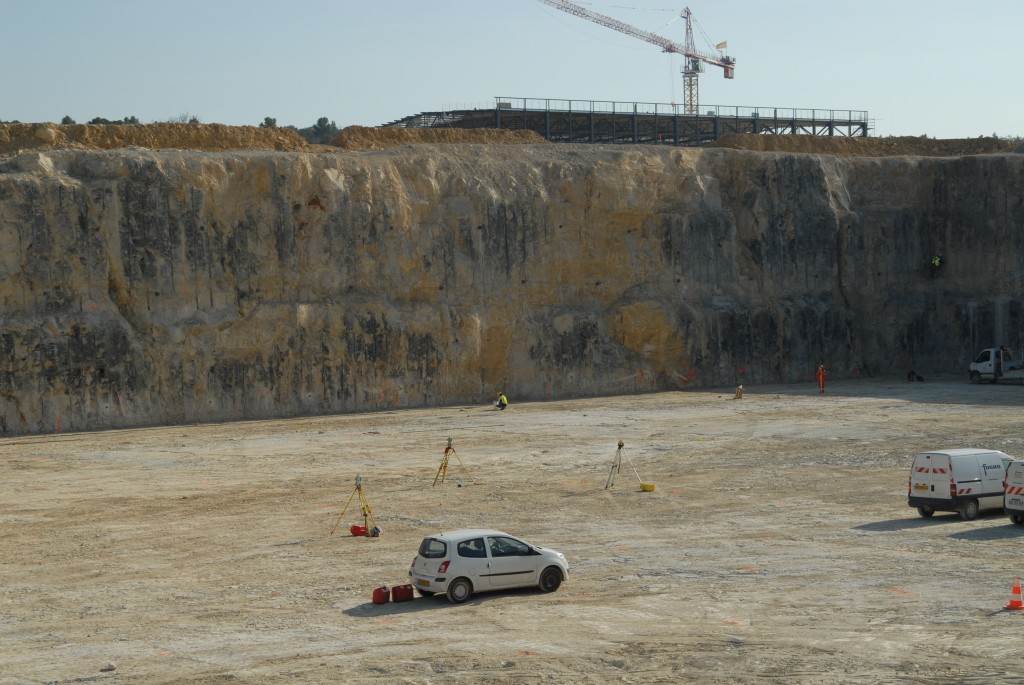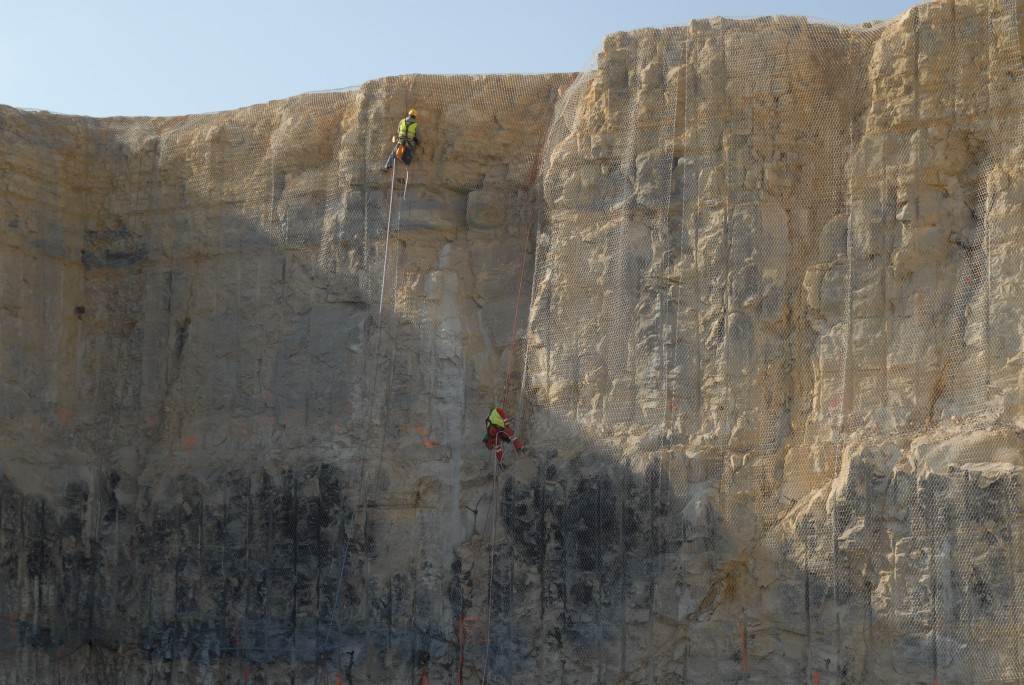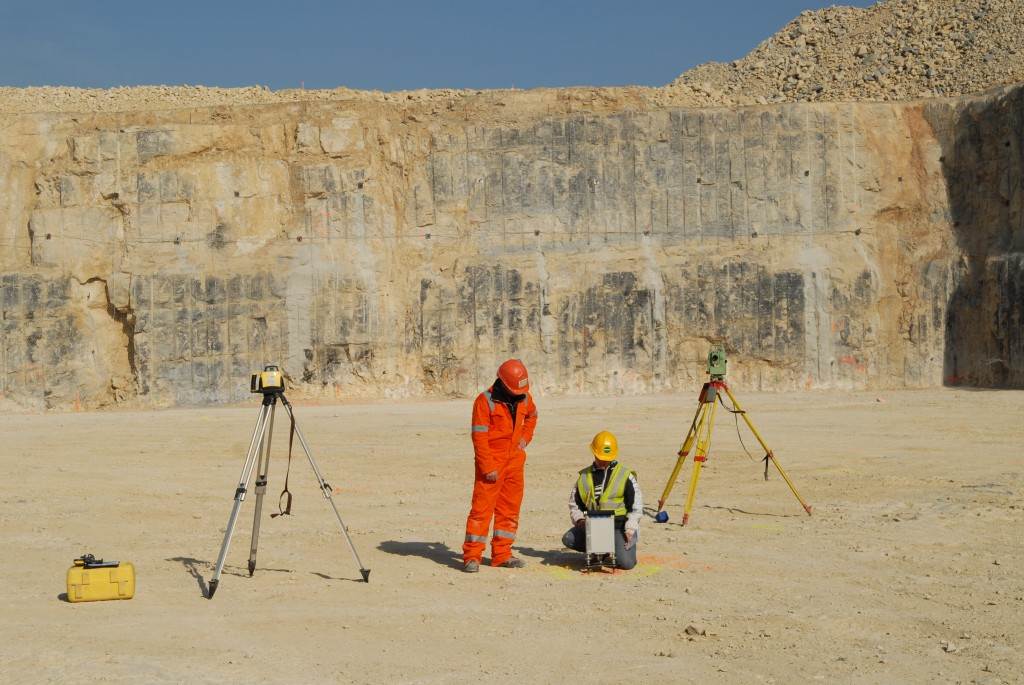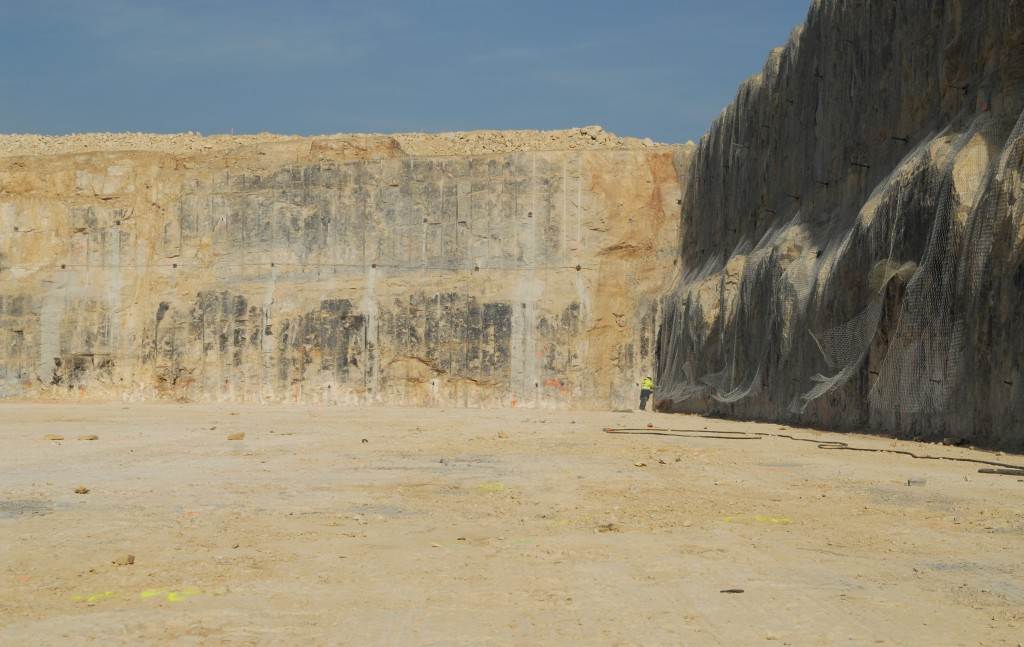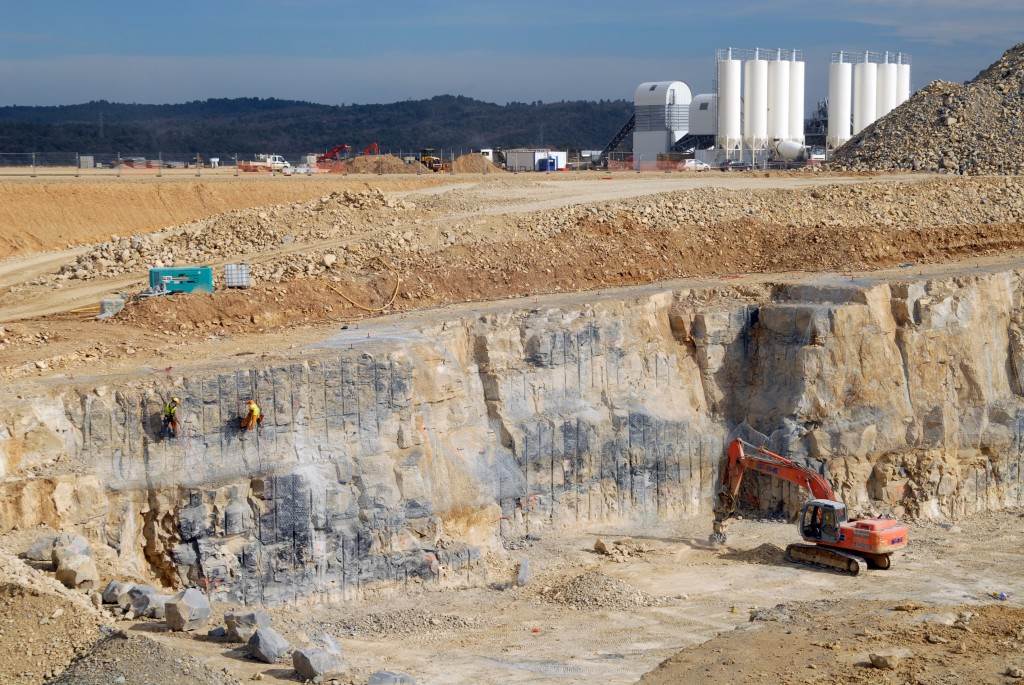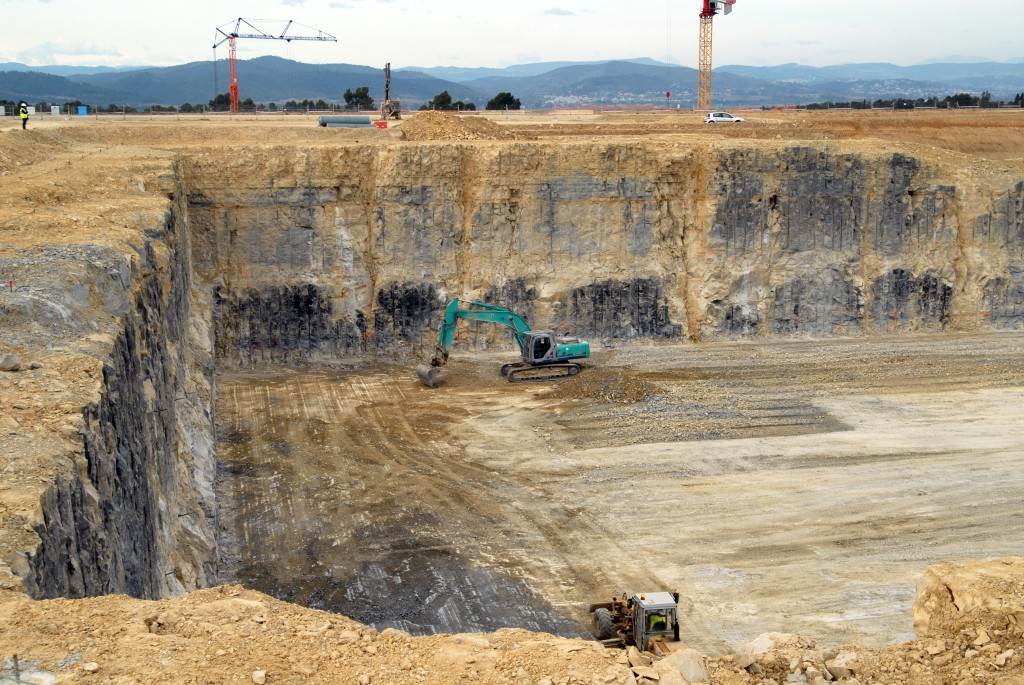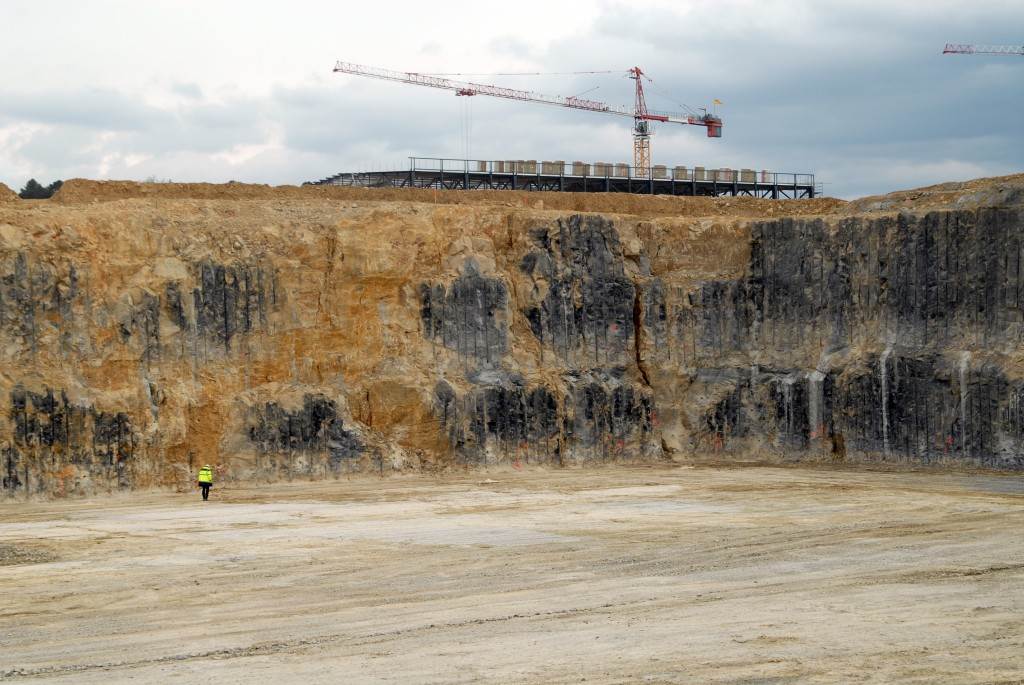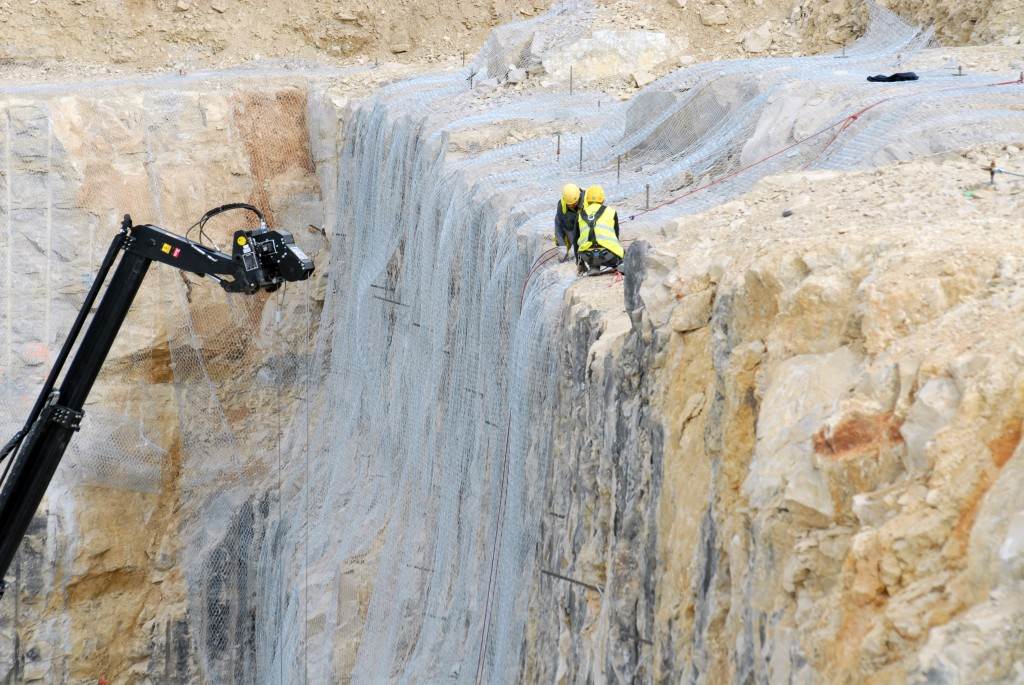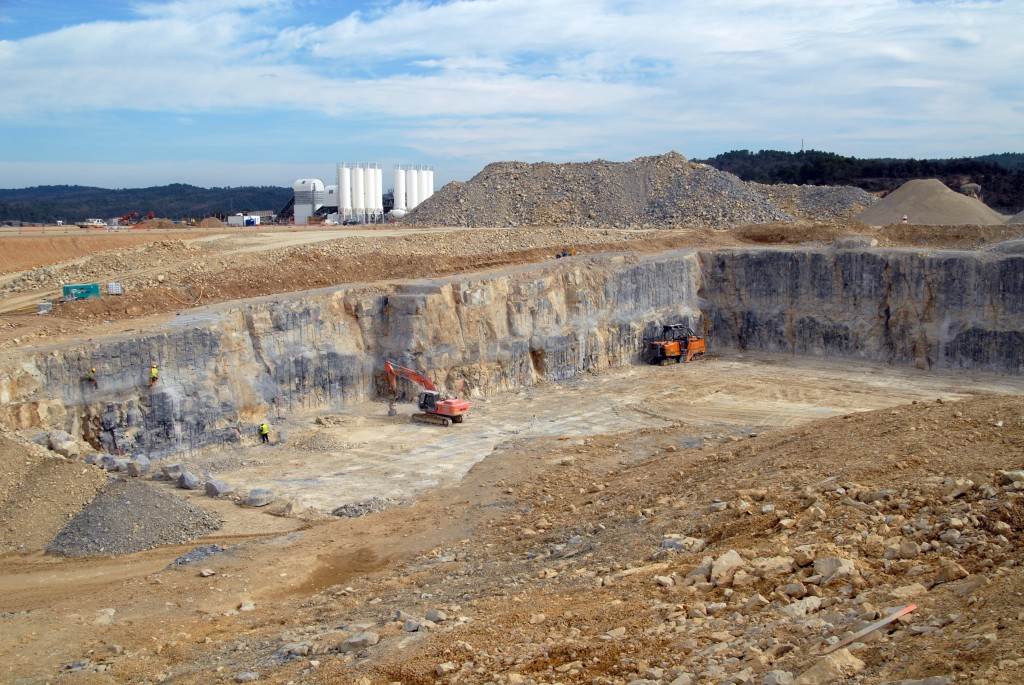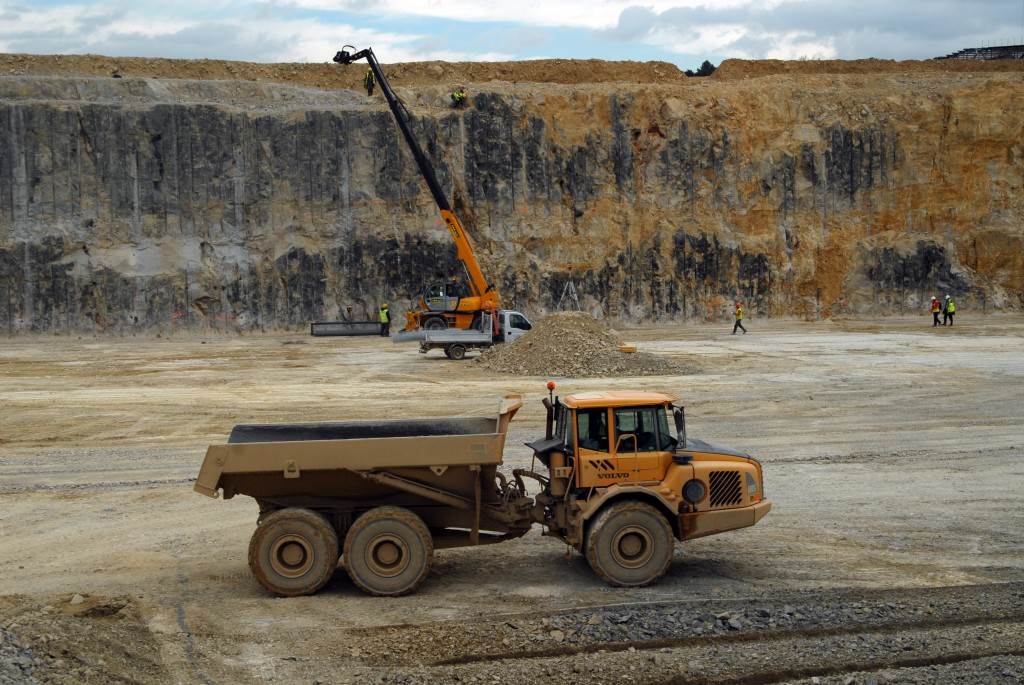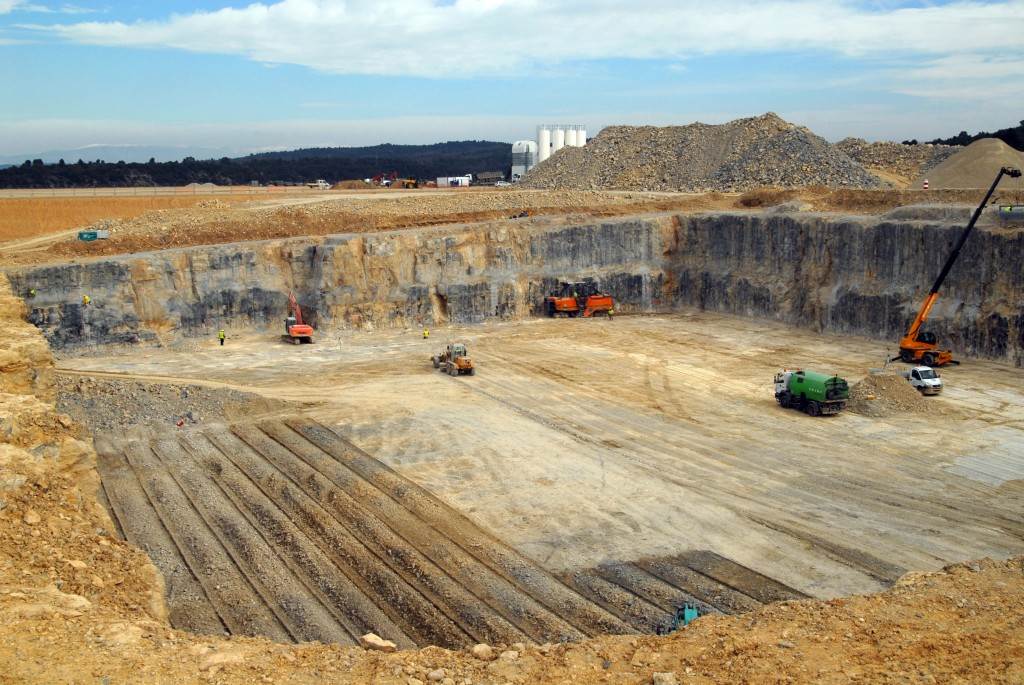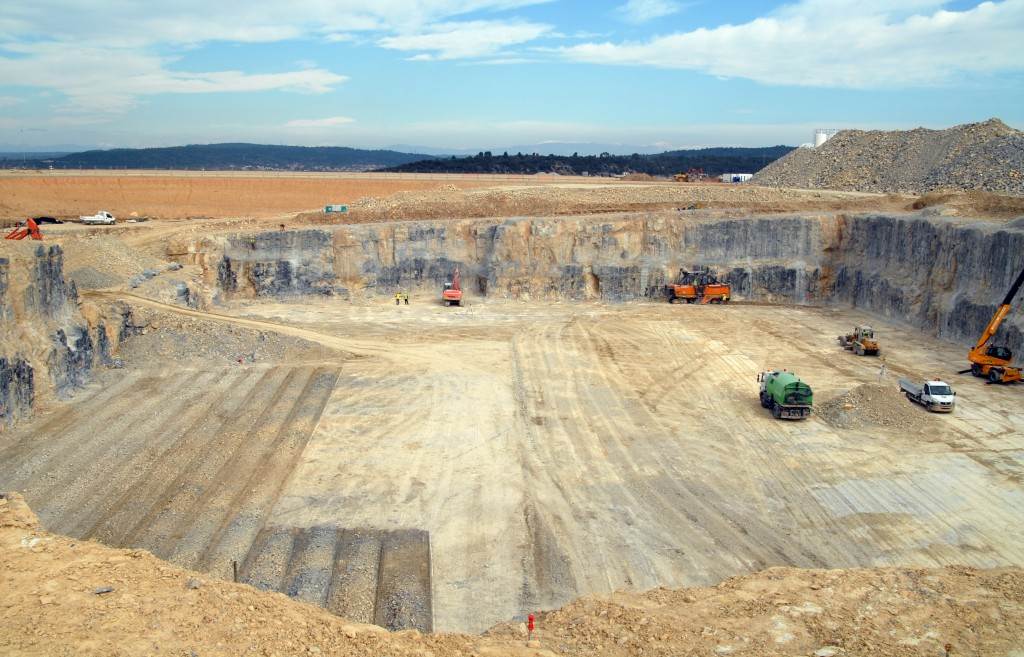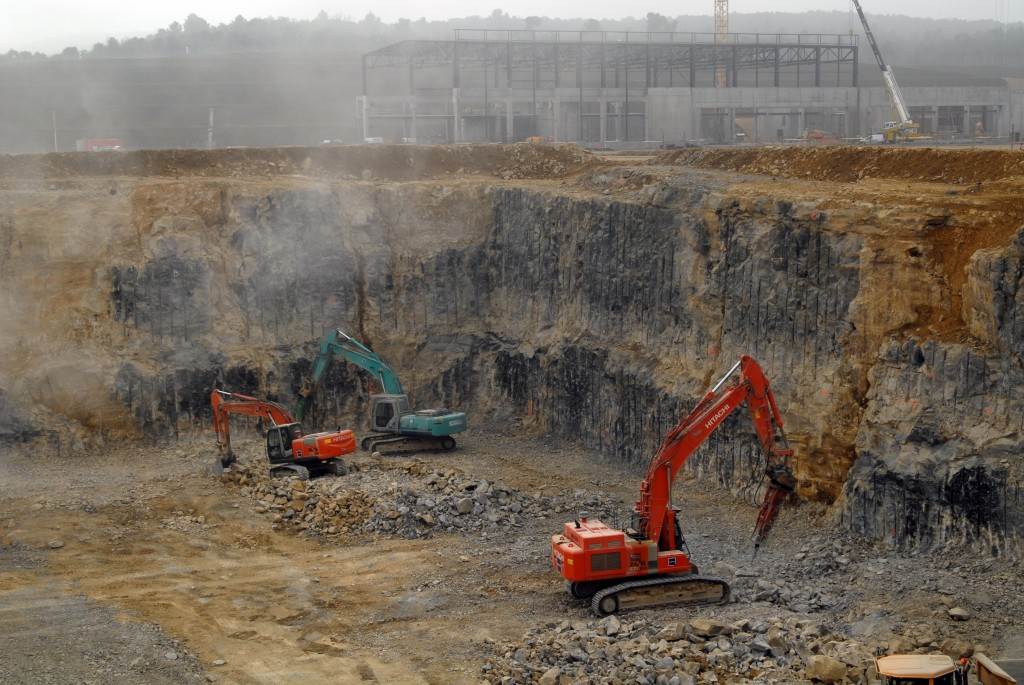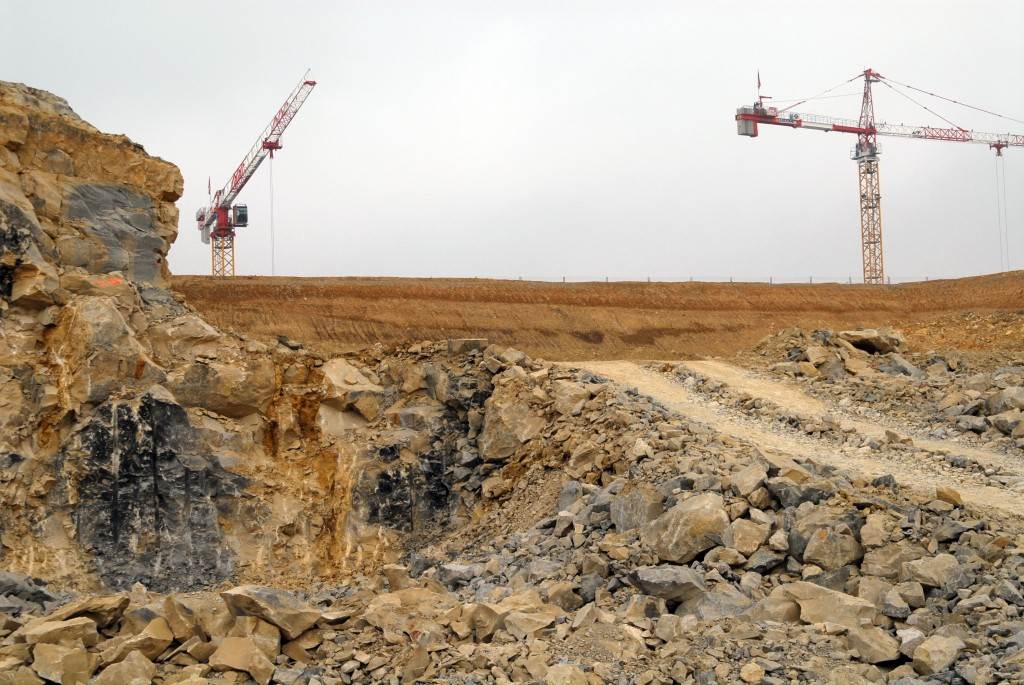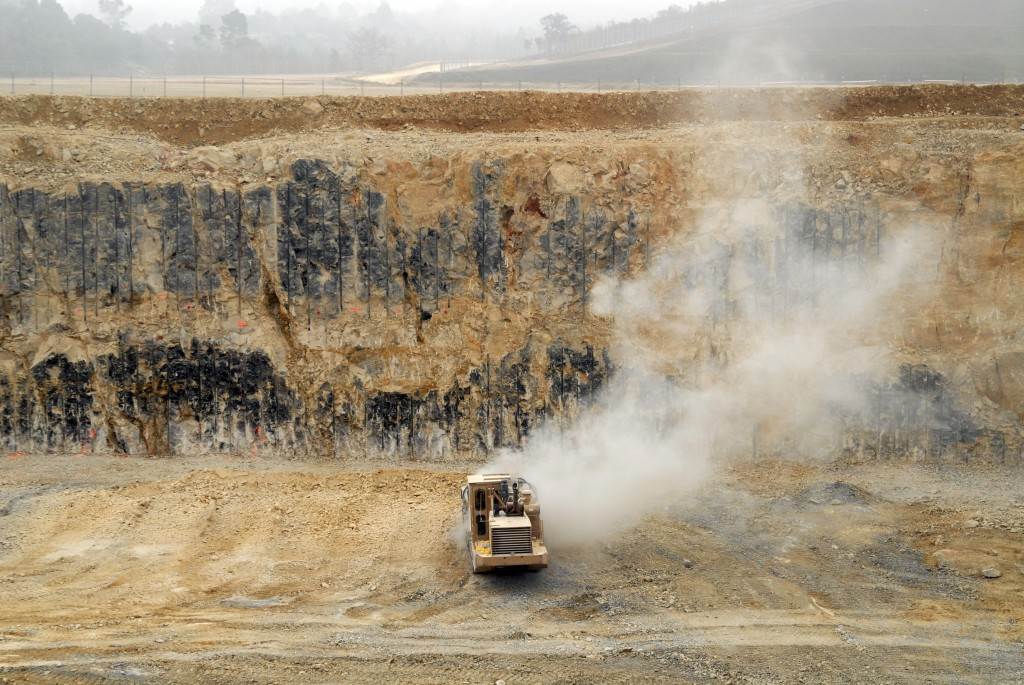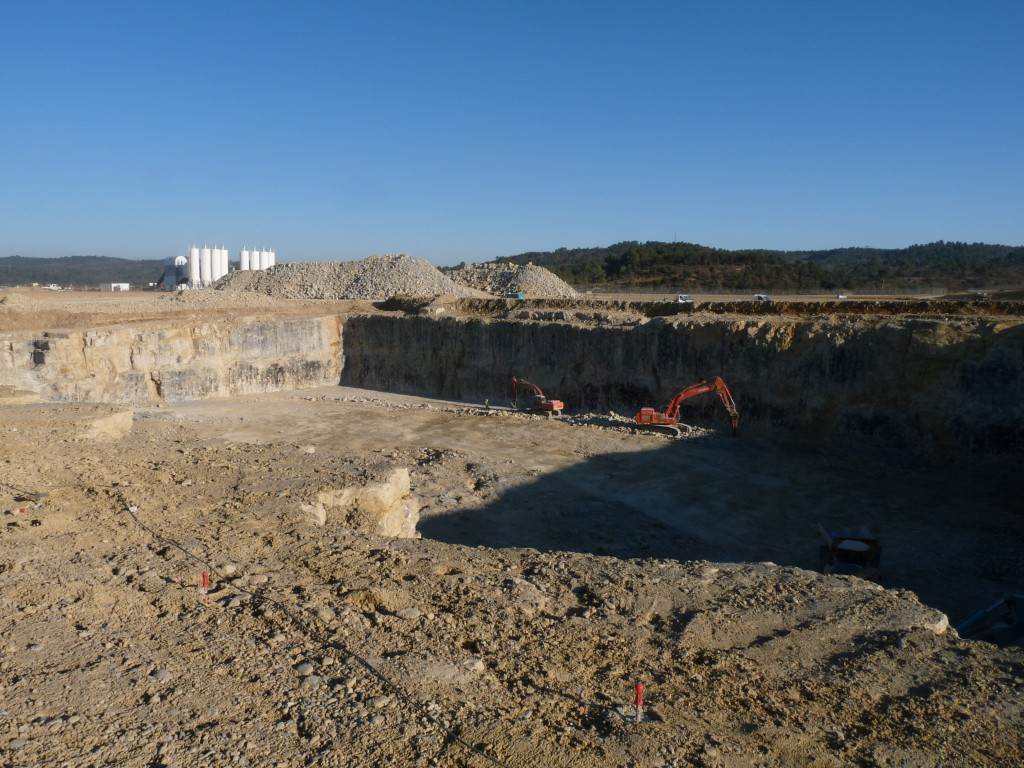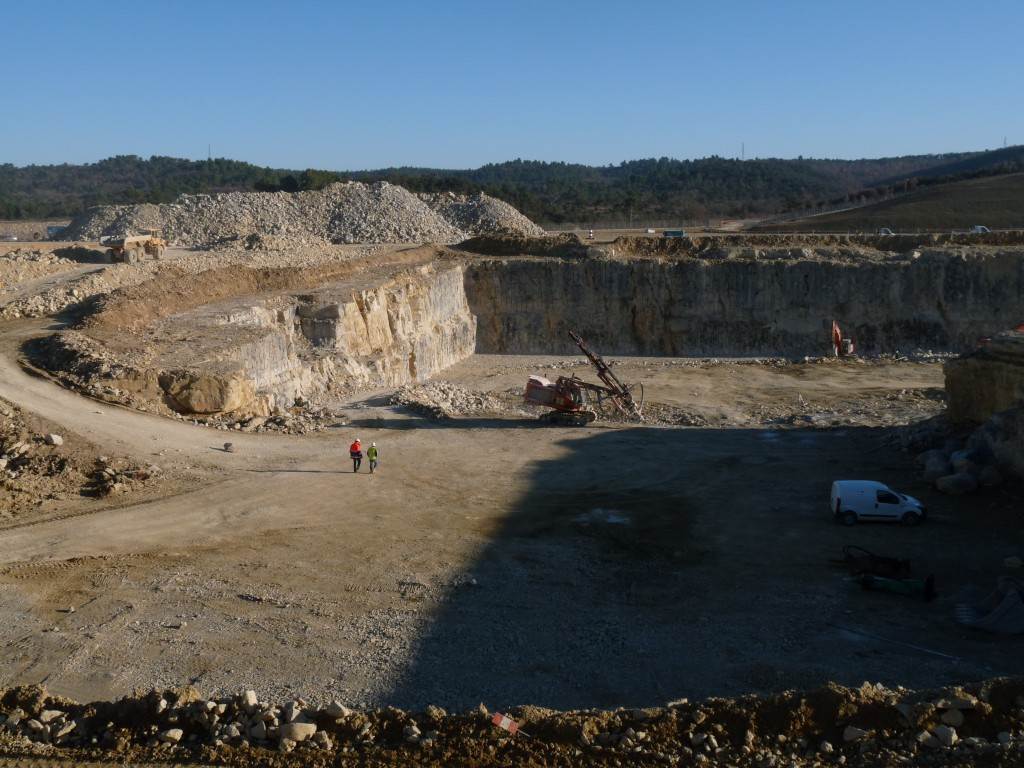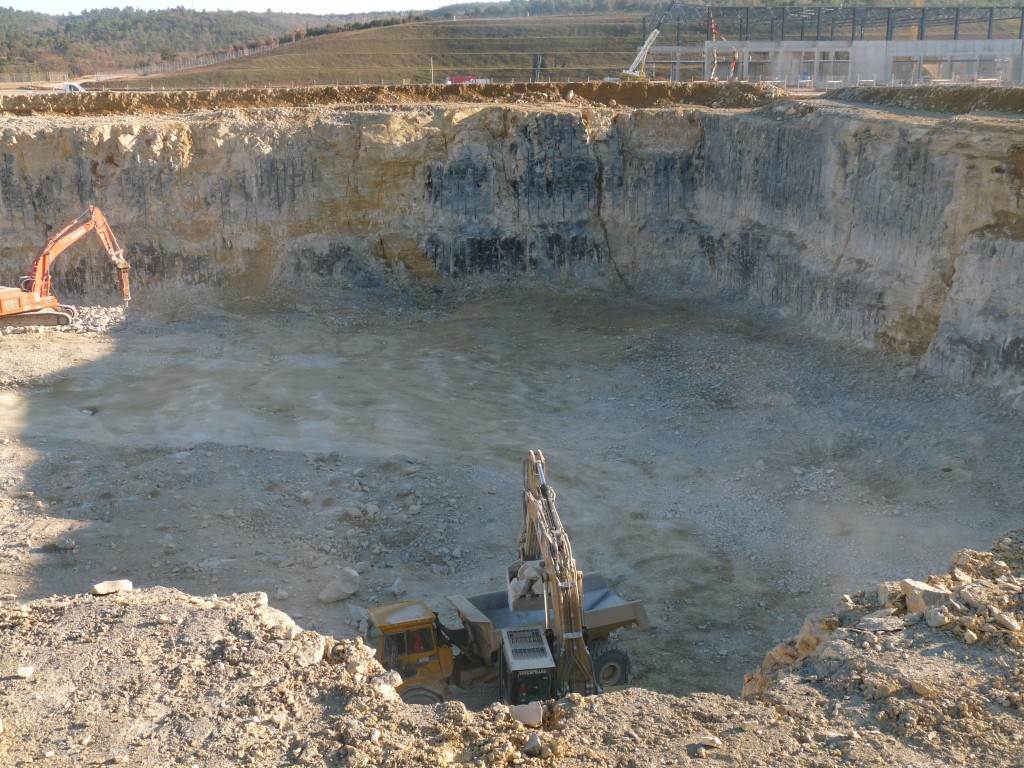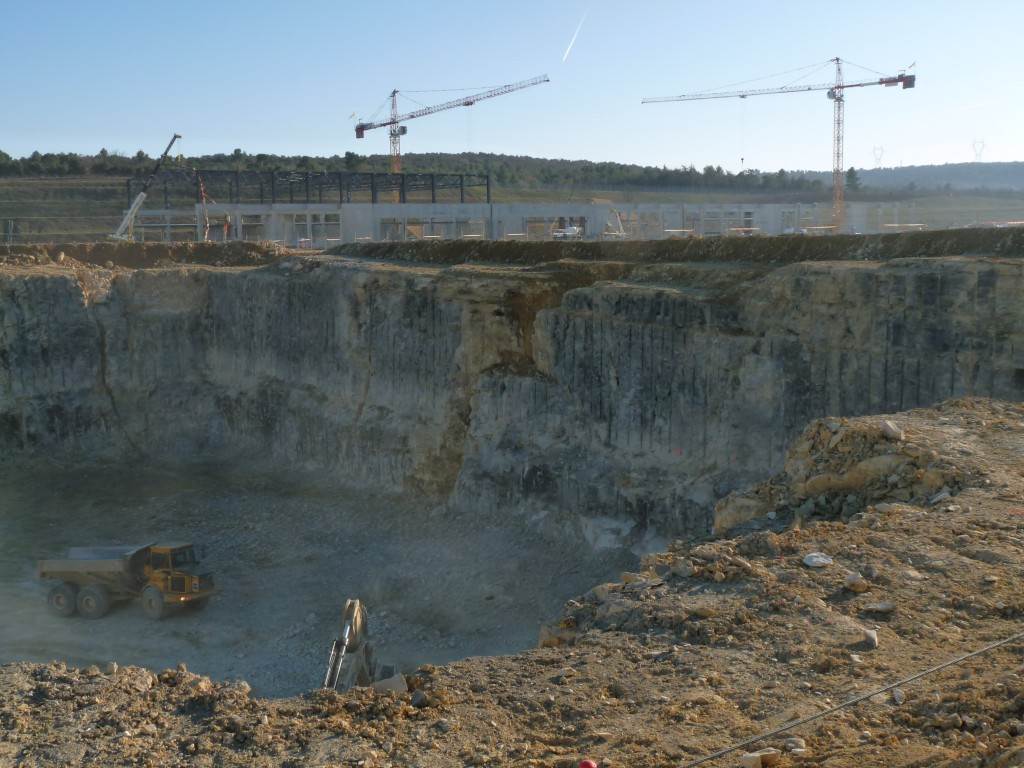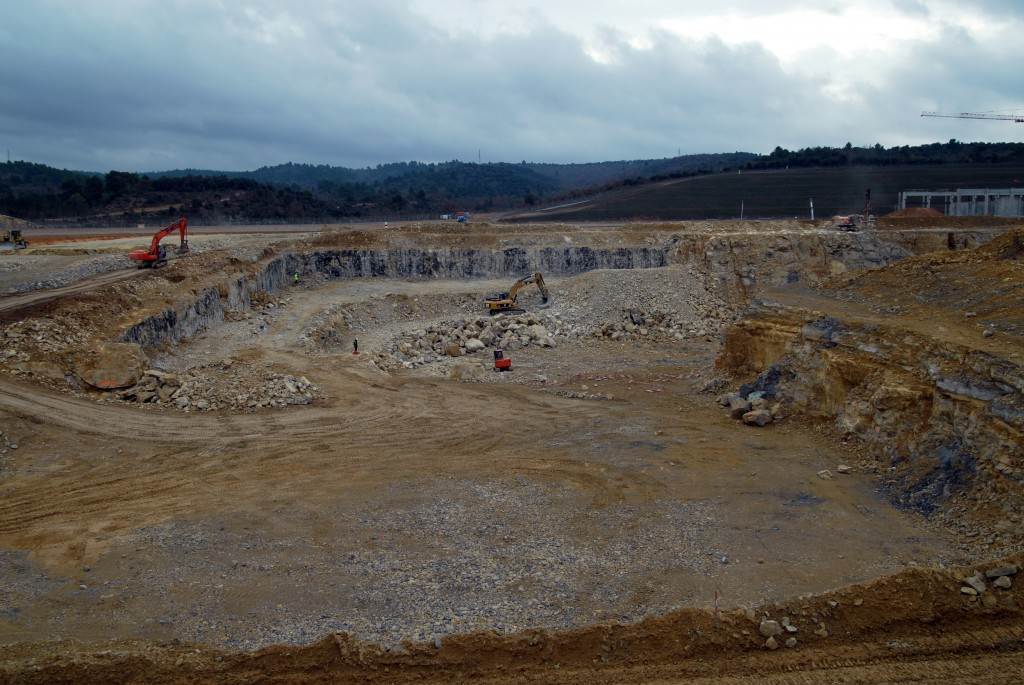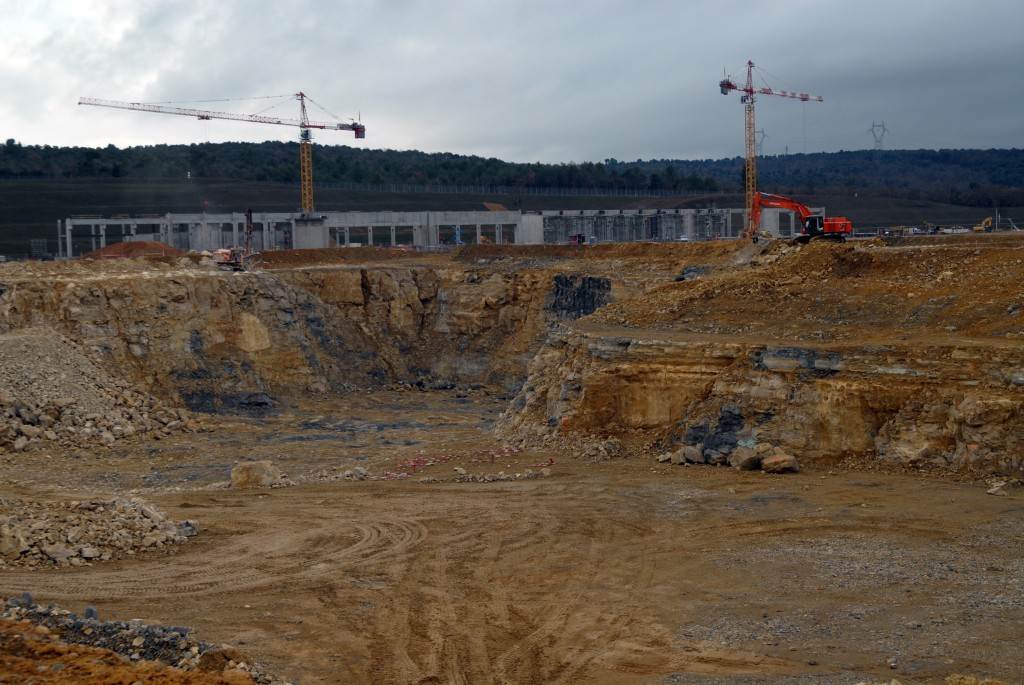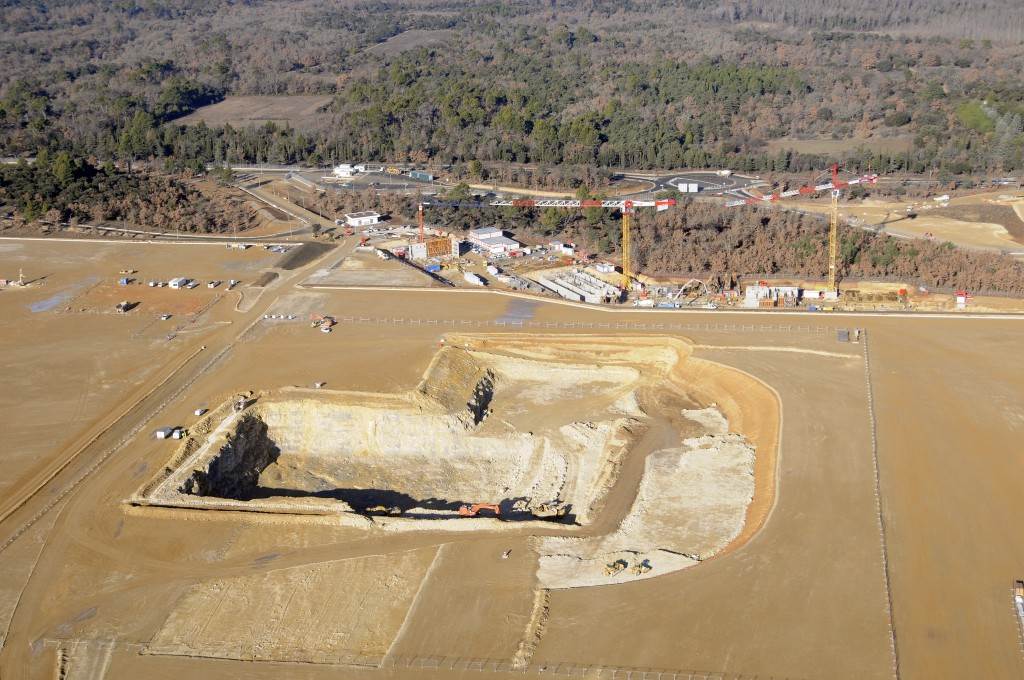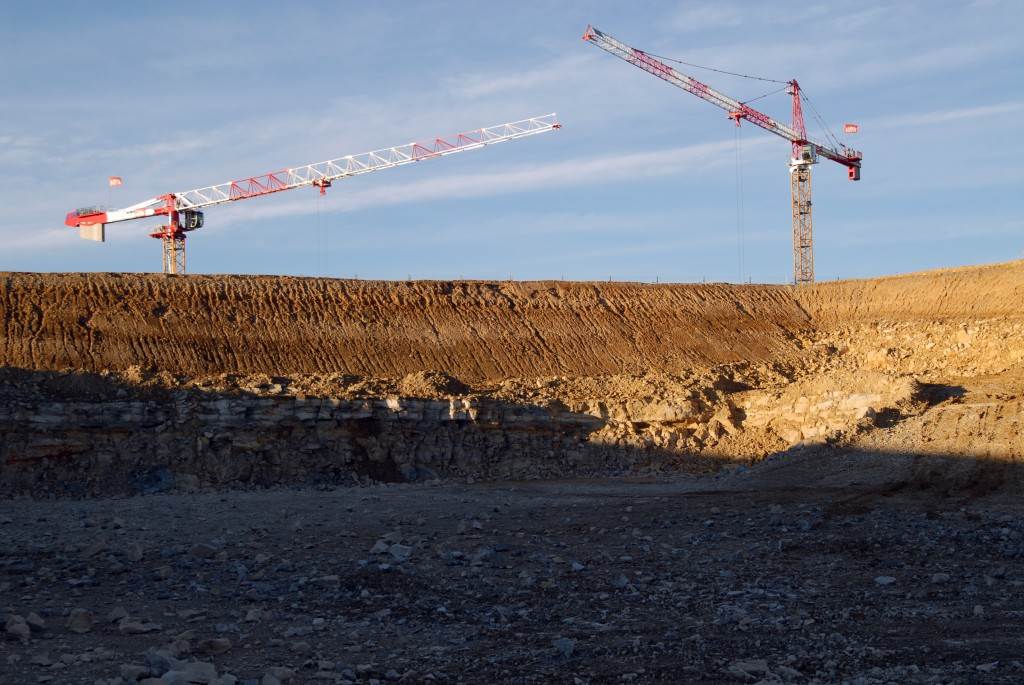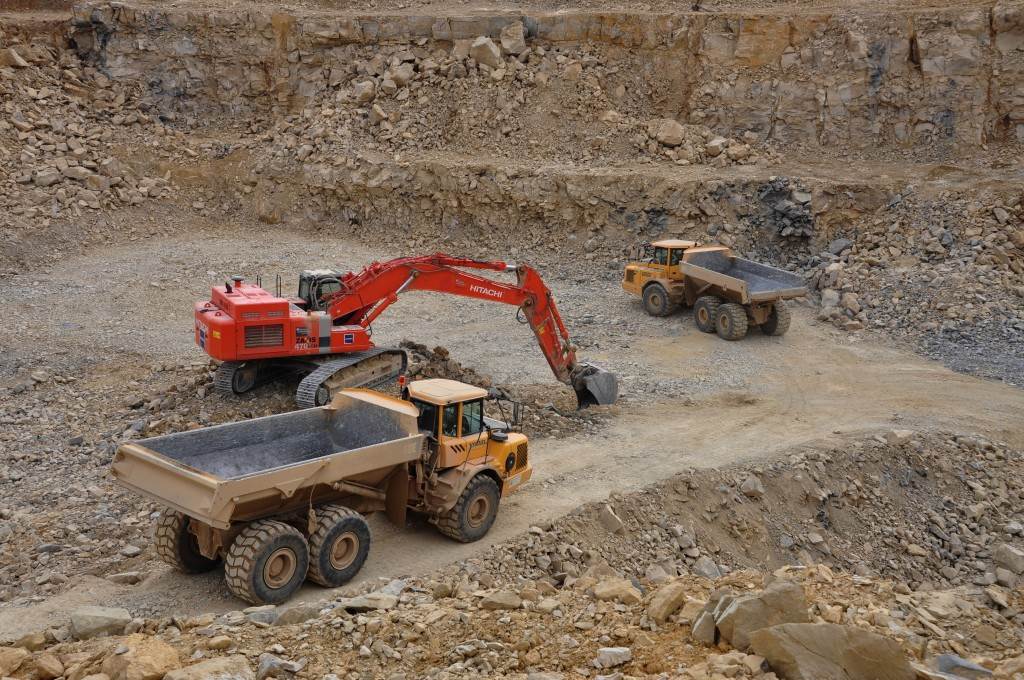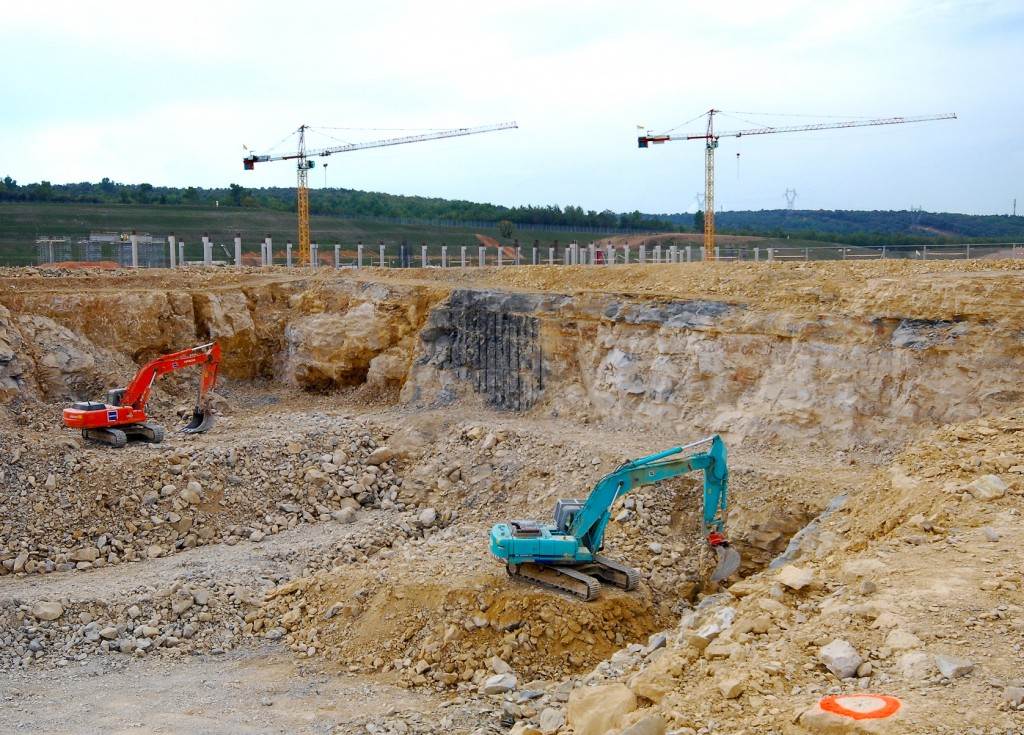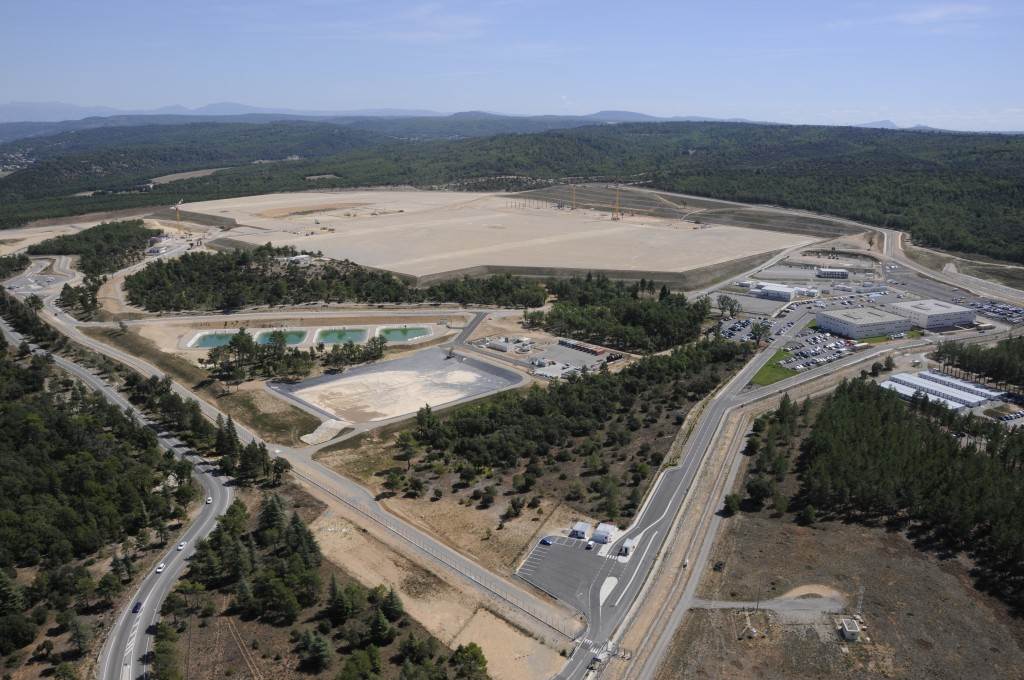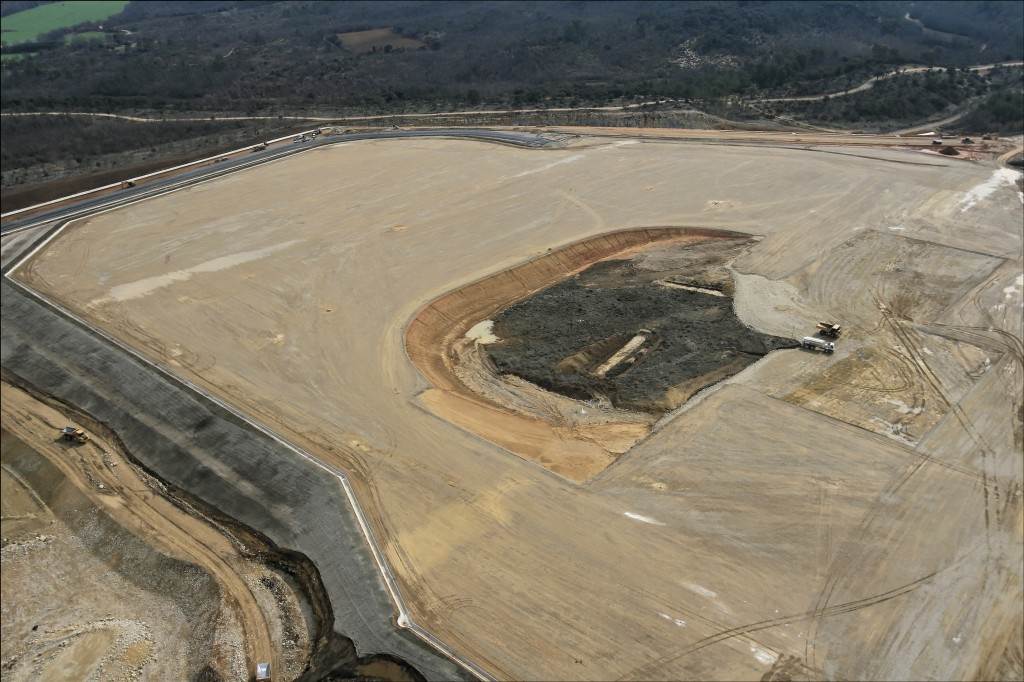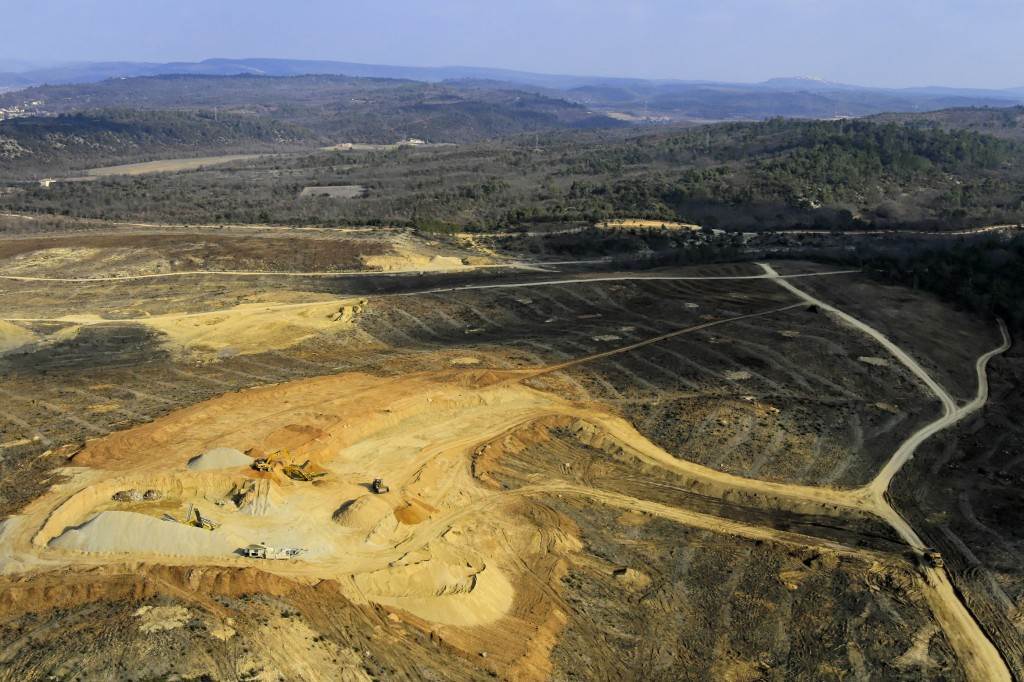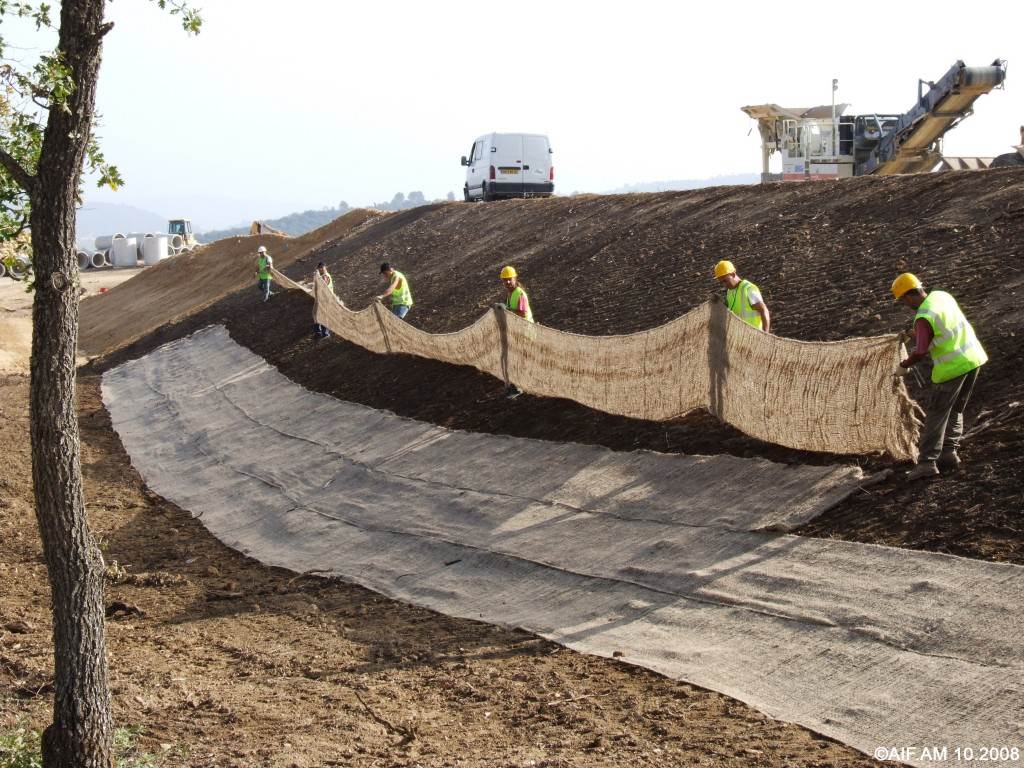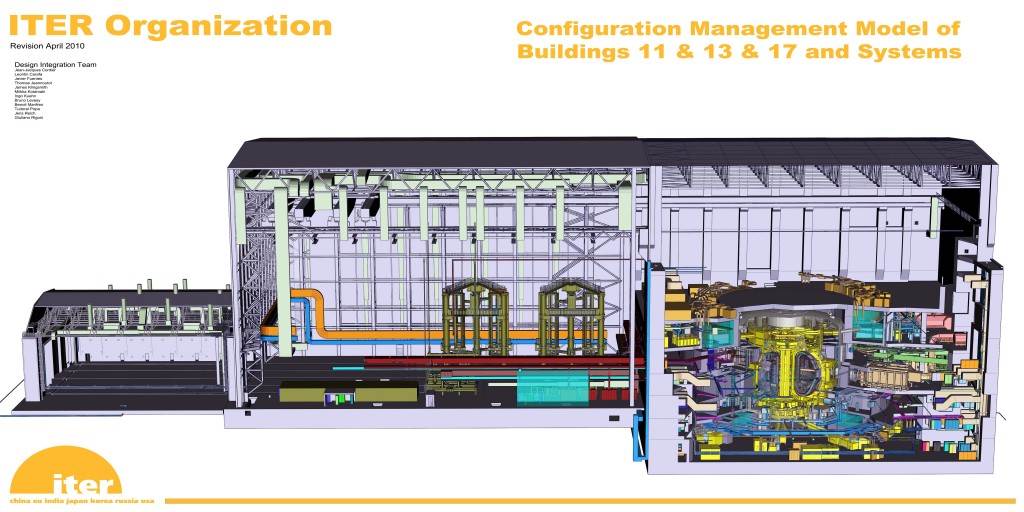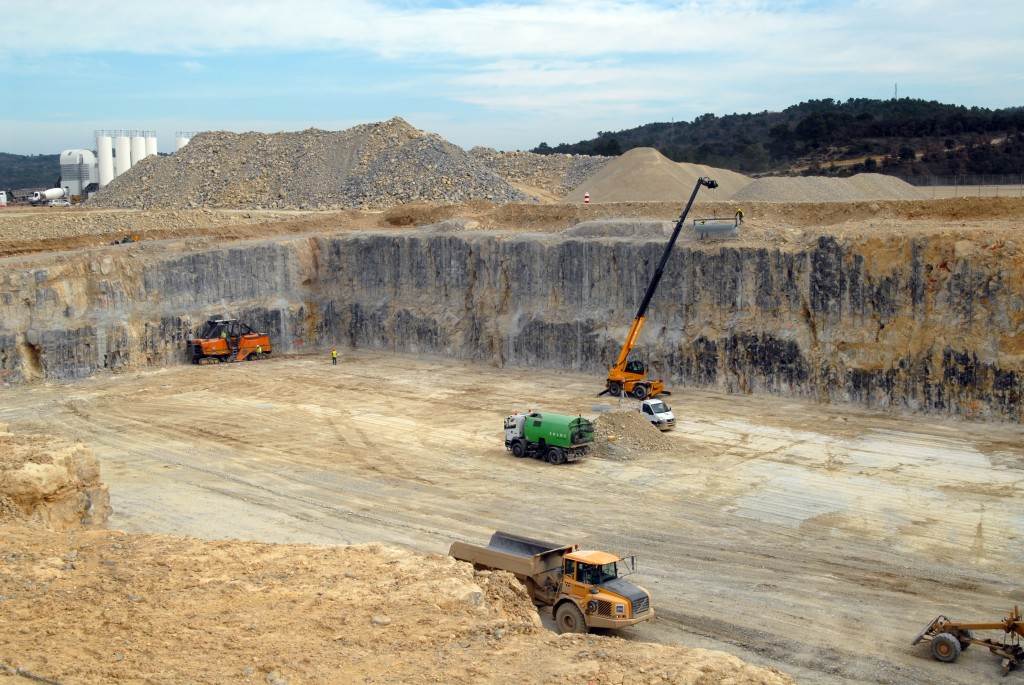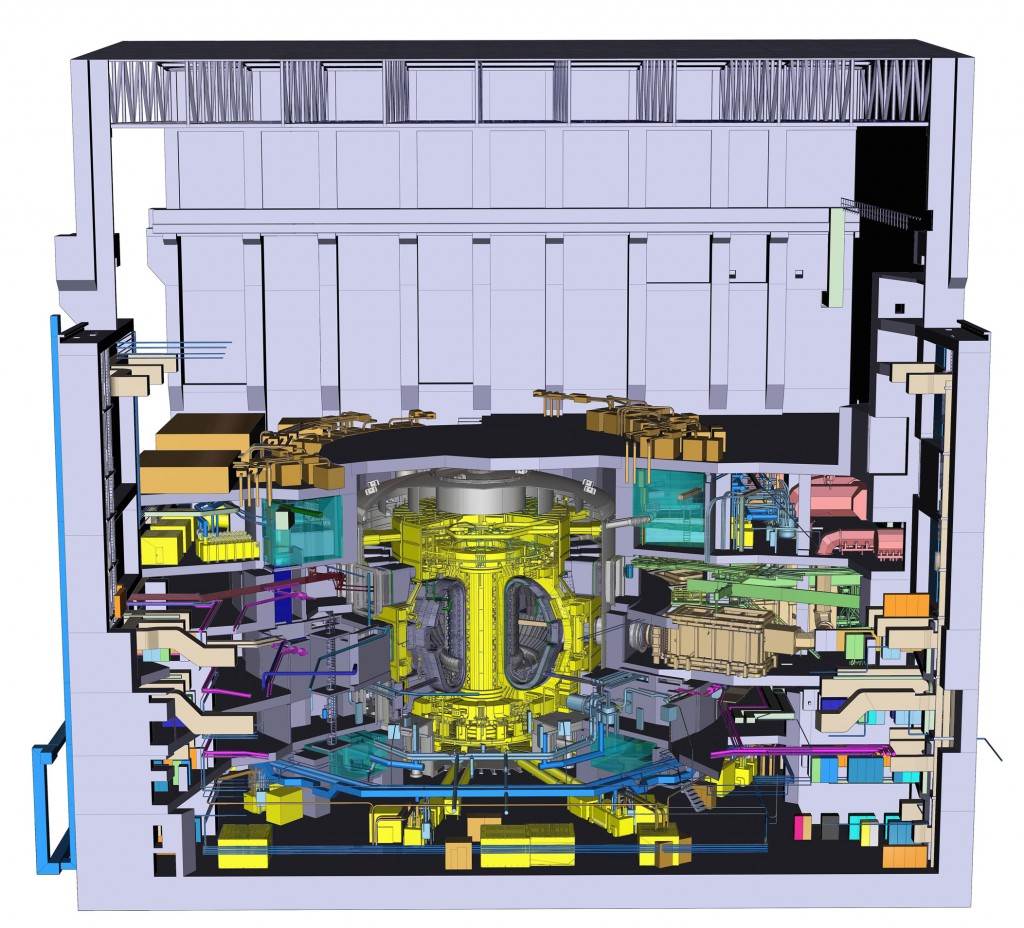The Project
- Building ITER
- Projects Underway
- Construction Archives
- Neutral Beam Test Facility
- Assembly Overview
- Tokamak Assembly
- Plant Assembly
- Commissioning
- Assembly Tooling
- Metrology
- Project Milestones
Seismic Pit Excavation

The Tokamak Complex Seismic Isolation Pit: 130 metres long, 90 metres wide and 17 metres deep. (March 2011)
The quality of the rock substrata on the 42-hectare ITER platform has determined the exact location of the 440,000-tonne Tokamak Complex, the heart of the ITER scientific installation.
The Tokamak Complex will be contained within a seismic isolation pit—a 17-metre-deep, 90 x 130 metre hollow in the ITER platform excavated to house the concrete basemat, retaining walls, and seismic pads that will protect the buildings and equipment in the case of a seismic event.
The excavation works to remove 210,000 cubic metres of soil and rock for the seismic isolation pit began in August 2010. After excavating down to 17 metres, engineers conducted sample drilling and radar surveys to establish a detailed map of the underlying bedrock. Several small voids ("karsts") were detected and explored, widened, and filled with concrete. Engineers used survey data to verify the assumptions used for Tokamak Complex design, before the establishment of the final structural design.
The final excavation phase for the seismic isolation pit involved milling the rock in order to achieve a perfectly flat surface on which to lay a first "blinding" layer of concrete. Construction of the ground support structure for the Tokamak Complex—basemat, retaining walls, seismic columns and pads, and final B2 basemat slab—began in August 2011 and was completed in August 2014.
Excavation facts:
- Excavation works: August 2010-April 2011
- Depth of the Seismic Pit: 17 metres
- Dimensions of the Seismic Pit: 90 x 130 metres
- Volume of rock and soil removed: 210,000 m³
- Mass of the Tokamak Complex: 440,000 tonnes (including the 23,000-tonne ITER Tokamak)
Photo Gallery


